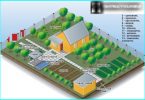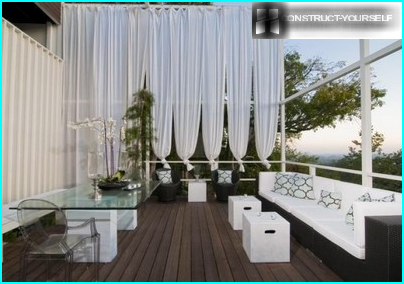
The desire to make a private area is cozy, where every element of landscape design harmoniously complements the other, of course for each gardener. A hedge is not only the perfect backdrop for flower beds and garden decoration, but also excellent protection of site from prying eyes. The formation of such natural protection is an art that requires patience and painstaking work, and incredibly fascinating process. Correctly selecting and placing on a plot of shrubs for hedges that can transform the whole area, dividing it into discreet areas.
The contents
The factors that determine the choice of plants for hedges
Choosing plants for hedges depends primarily on the desired appearance of natural barriers. If to take as a basis the species applied for registration of the crops, the fence may consist of coniferous and deciduous plantings, and if you take their form, then fencing may be free growing or clipped.
Depending on the height of shrubs, vegetative barriers can be in the form of low curbs, medium or high fences.
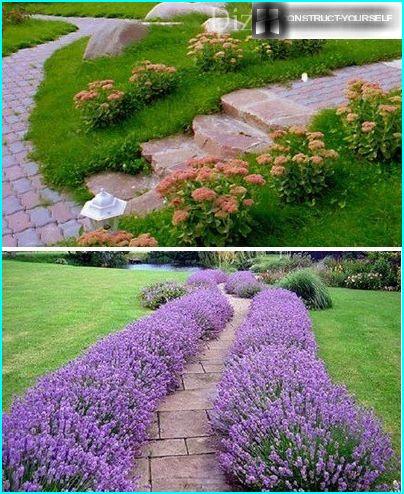
Border planting with a height of 30-70 cm help to focus and identify the elements of the landscape. Quite often borders are used to zoning
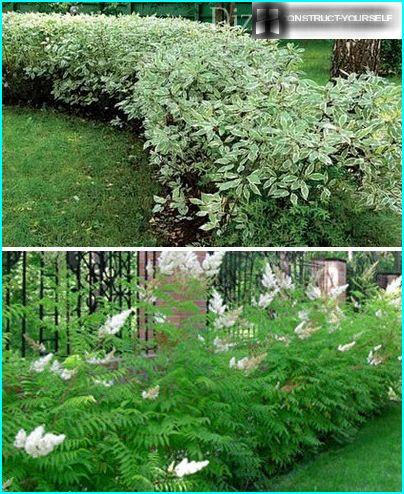
1-1,5 meter vegetative compositions are applied to dividing the land into parts, and indicate its boundaries. High trellises allow you to protect the area from dust, wind and noise, as well as to protect from the prying eyes of passers-by
Hedges can be planted as single-row and double-row method. Single row planting are used to decorate the plot, they do not protect the area from dust and noise. Dual row of the composition settle in the places that require more substantial protection.
Selection of plants depends on the varieties of existing plantings in the garden. Combining several types of plants in one living arrangement, you should consider the coincidence of its appearance and life cycle of each of the elements: shape and color of leaves, flowering periods.
A hedge of deciduous plants
Deciduous plants are most often used for arrangement of live fences, as they are capable of flowing more ambient light and easier to tolerate adverse climatic conditions. Such plants can easily tolerate the seasonal pruning and are ideal for creating moulded borders.
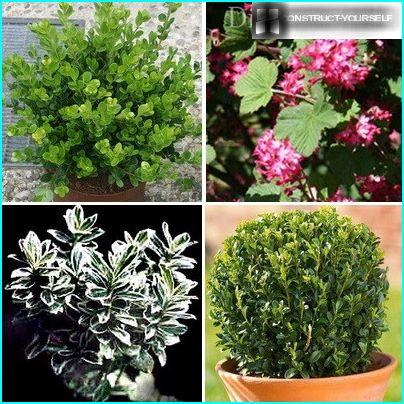
Setting borders and creating a fence up to a height of 1 m, it is possible to use low-growing shrubs: boxwood, Japanese Euonymus, currant Alpine
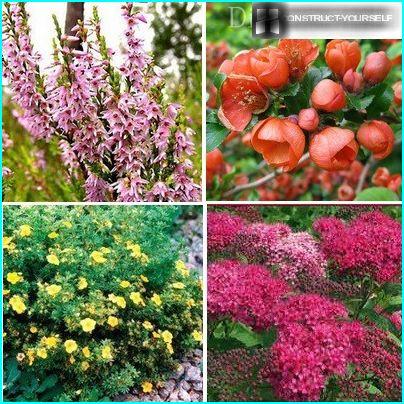
Planning to create svobodnorastuschih fence, the choice can be stopped on the Heather, the English, the Japan quince, magnolias, Holm, Potentilla
For live fences with a height of 2-3 meters among the deciduous species are well-proven: ordinary Privet, hawthorn, buckthorn evergreen. Among flowering plants, preference can be given: forsythia, Jasmine, razlichnym types of lilac, Syrian rose, hydrangea tree. Wanting to create a song from berry plants, the choice can be stopped on Kalina, the Japanese quince, dogwood, honeysuckle edible.
When building a barbed fence you can use: roses-wild roses, climbing rose, rose, Daur, hawthorn purpurnolistnaya, barberry Amur.
Climbing plants for hedges can give walling elegant original appearance.
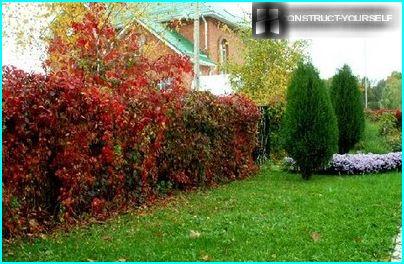
Because climbing plants have weak stem, for the arrangement of such openwork fences need to make a frame
When you make a plot you can use honeysuckle, parthenocissus, clematis vinogradnaite, hydrangea, cingil prickly, Humulus lupulus.
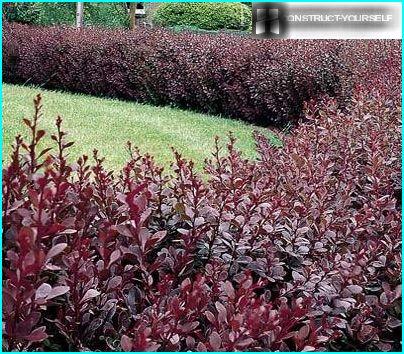
Look spectacular plant compositions of planted rows of flowering trees with brightly colored bark. The most interesting colors are a felt cherry, mock orange, currant, barberry
High living wall to 5 meters or more you can arrange, using fast-growing plants for your hedge: Holly, Norway maple, mulberry, black and white, hazel, hornbeam. For tall plant compositions suitable as ornamental plum and Apple trees as well as beech, maple and Linden.
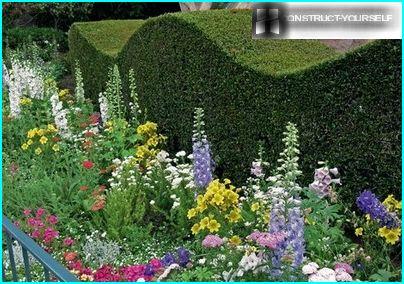
The design of the base of hedges flowering shrubs and mixborders of dwarf plants will give the composition more expressive
A living fence of conifers
Evergreen shrubs give the garden a strict and restrained appearance. In comparison with deciduous flora, the conifers are more demanding in care.
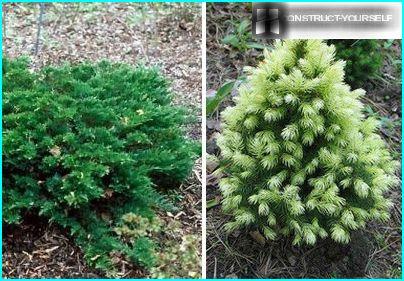
Among stunted candidates for the installation of curb, you can highlight the juniper, Pieris, and with shiny lanceolate leaves, canadian fir
For medium and high living fences the species is suitable gorokhovoy, tall arborvitae, spruce, yew canadian. Most conifers easily withstands pruning. This feature allows you to create a strict smooth pine fence.
Clipped or informal hedges?
Free-growing plants, obviously, the least demanding of care. To create a free-growing conifer fences selected plants with different texture of pine needles and shape crown. Interesting look combined planting. Very successful combination of deciduous trees of mountain ash and birch with pine beautiful fir and pine trees.
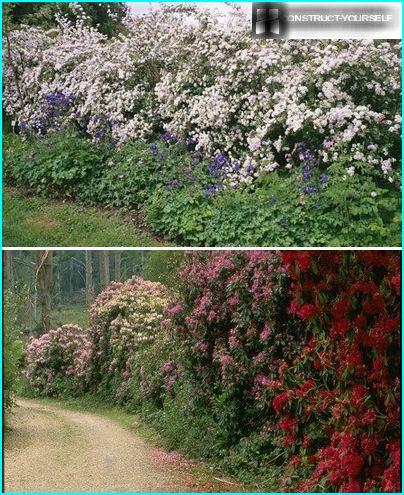
Free-growing composition that looks like a natural fit. They take a lot of space on the plot
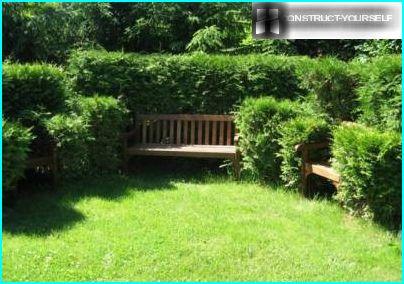
Cropped floral compositions are more aesthetic appearance
Compact form of a hedge visually takes up less space. But to contain this form are required annually to make some effort in pruning and care. Among the decorative forms of plants can easily tolerate pruning dogwood red and white, Japanese meadowsweet, elm, small-leaved, many-flowered cotoneaster, Japanese quince, acacia yellow.
Choosing the best plants for hedges, it is possible to create a composition that not only serves unsightly areas, but «quicken» unattractive enclosing structures. In addition, it will be «filter», giving additional purification of the air.






